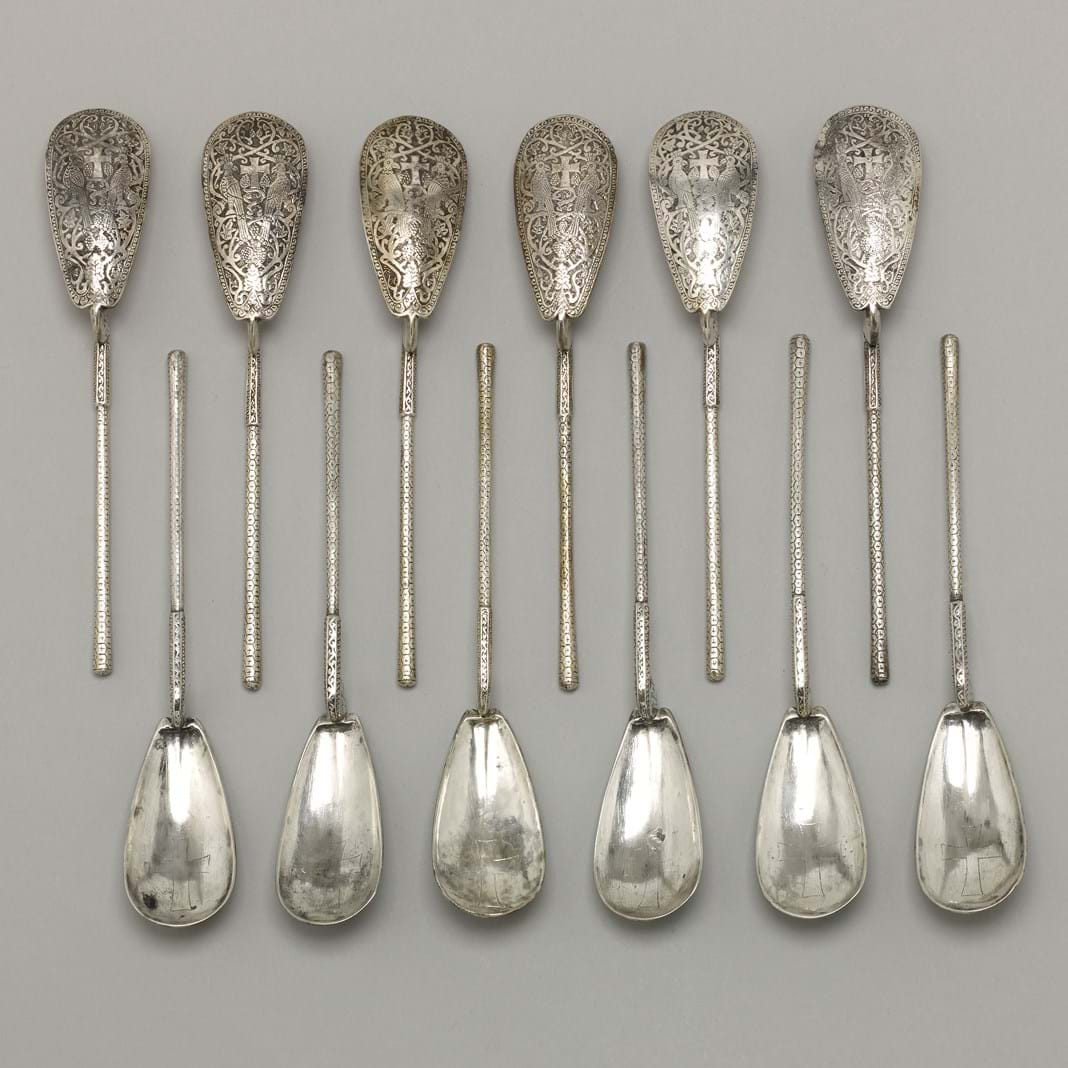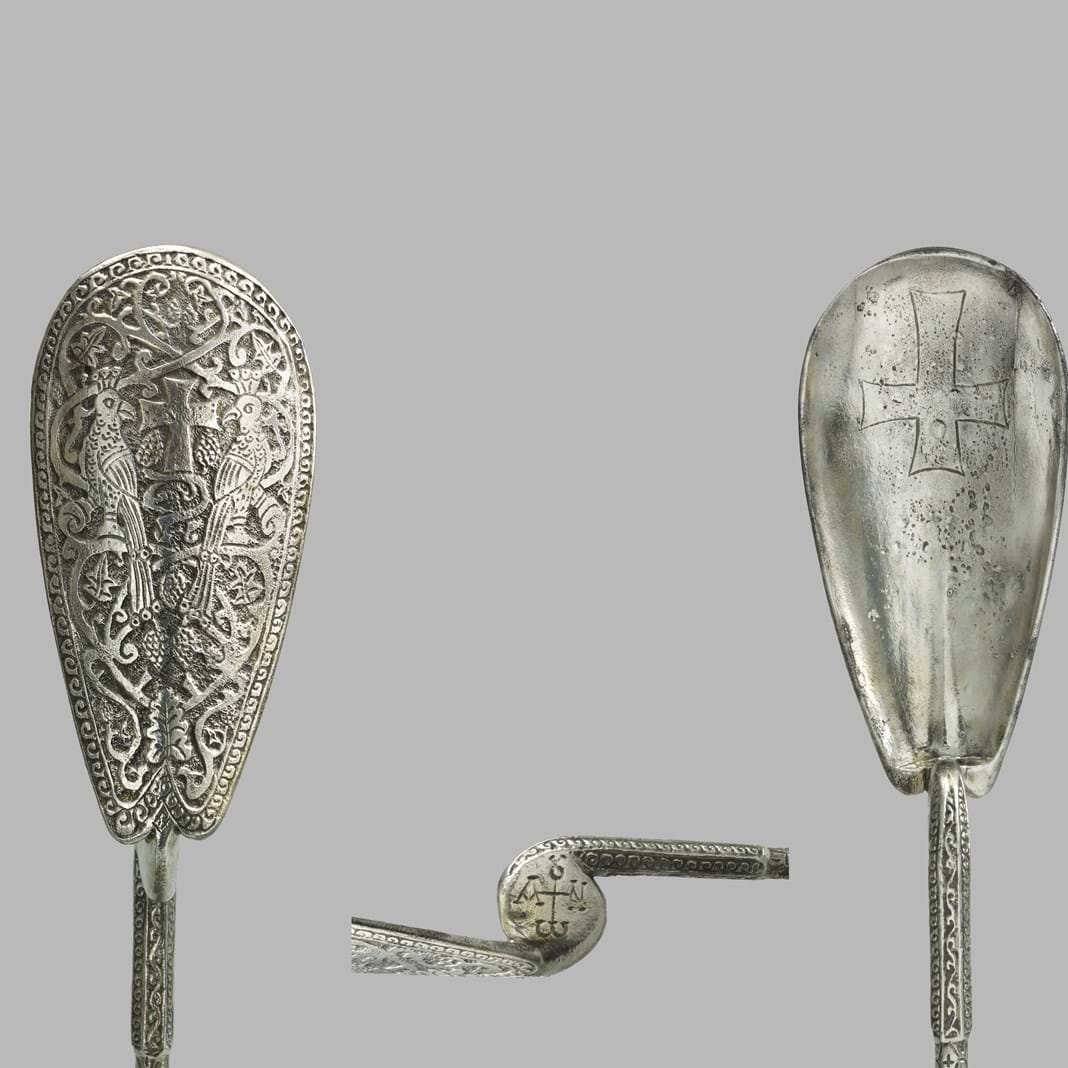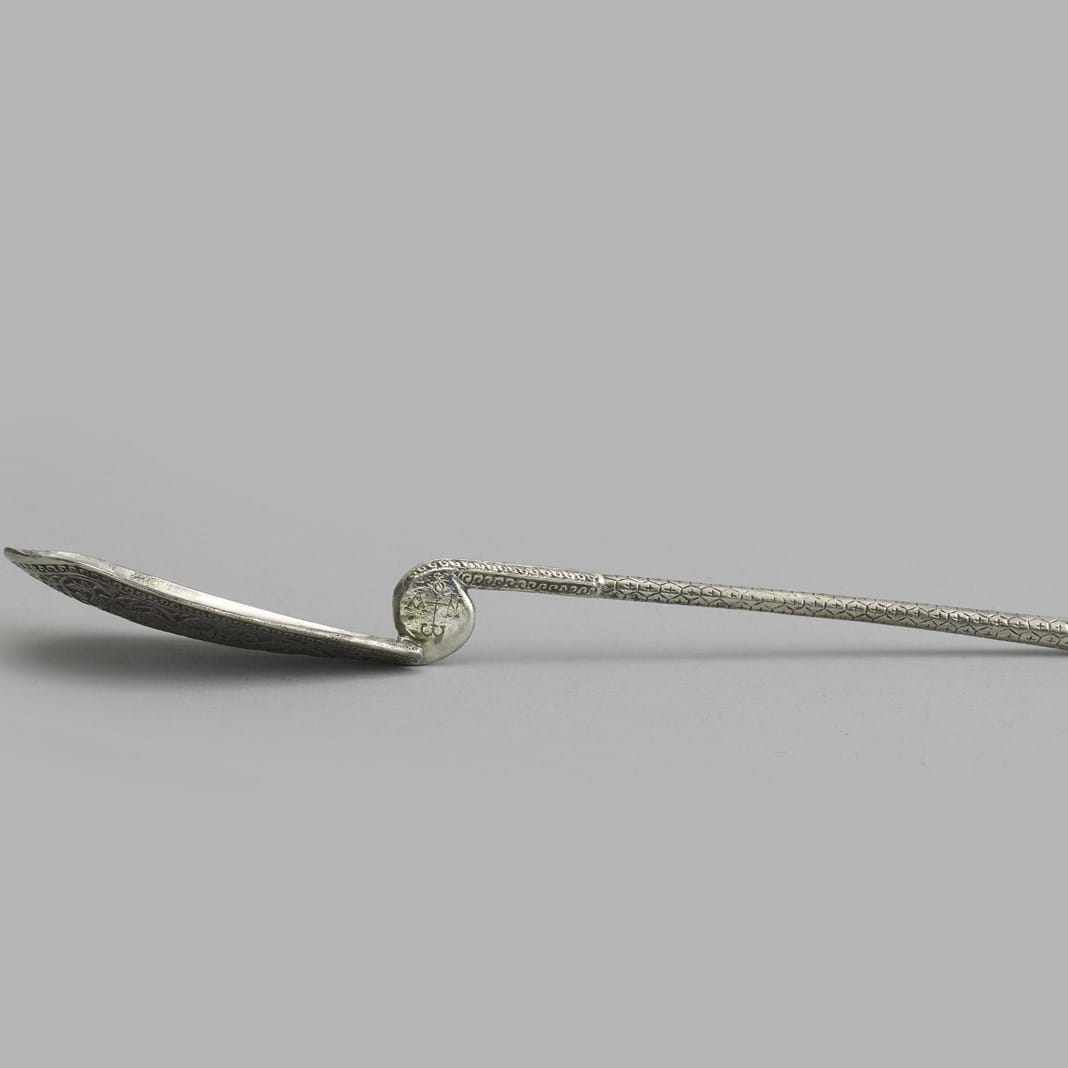A remarkable matching set of 12 early Byzantine silver serving spoons
The shape and construction of this exceptional set of spoons each consisting of a long slim handle, a pear-shaped bowl and a round disc which connects the handle to the bowl in a stepped joint, is of the standard Late Roman / Early Byzantine type known as a ligula. Their larger than normal size and the absence of a pointed tip to the handle for spearing food morsels, indicates that they were intended for serving rather than for eating.
The interior of the bowls is plain and lightly engraved with a parcel gilt cross (much of the gilding now lost). The exterior is chased and was inlaid with niello (much of it now also lost). It is decorated with two facing peacocks perched on scrolling vines flanking a cross and edged with a narrow border of stylised waves.
The thin long shafts of the handles are made of a single piece of solid silver, but are fashioned in two parts; a short length of hexagonal section at the bowl end, followed by a much longer part of round section which flares gently outwards towards the tip. The facets of the hexagonal part are chased with alternating bands of scrolls and stylised waves, while the surface of the round part is covered in its entirety by a finely-engraved honeycomb pattern, each hexagon of which contains a small cross.
The circular disc of tapering section which provides the stepped joint between handle and bowl is engraved on one side on all 12 spoons with the same monogram which reads IΩANNOV, ‘of John’ or ‘belonging to John’.
In Late Antiquity the control of production and distribution of all silver, including tableware, was under the authority of the emperor. Its use and possession, however, was not restricted to the highest imperial ranks, but could be purchased for personal use by wealthy private citizens. Thus fine tableware formed part of the contents of every aristocratic household. Indeed, the price of silver was not so exorbitant as to prohibit members of the upper-middle-class from affording single pieces. Although archaeological finds document the presence of late Roman luxury tableware across Europe and all the way to Scotland, it is generally accepted that the custom of using precious utensils for eating originated in the eastern parts of the Roman Empire.
As for this unique matching set, the presence of 12 identical serving spoons indicates it would without doubt have graced the banquets of a very grand household. Its survival provides poignant testimony to the cultural sophistication of the Eastern Mediterranean in the early Byzantine period. The delicate craftsmanship of the beautifully engraved bowls and the elegance of the handles, attests to their having been fashioned in a metropolitan workshop catering to an aristocratic clientele. The most likely place for the manufacture of this set therefore is likely to have been the Empire’s capital, Constantinople, although one cannot exclude some of the other great cities of the Roman East such as Alexandria, Antioch, or Nicomedia.
Coming to a dating of this set, the formula of the monogram with the letters in a cruciform arrangement first appears during the reign of Justinian in the mid-530s and become commonplace soon after. Another pointer is the similarity of the decoration on the bowls’ exterior with marble reliefs from Ravenna dating from the middle and the 2nd half of the 6th century. Taken together, a similar date seems appropriate for this set.
Origin
Constantinople (?)
Date
Early Byzantine period; 6th –7th century
Length: 23 cm
Size / Dimensions
Weight (each): ranges from 66.97 g to 76.58 g
Weight (all 12): 863.31 g
Provenance
Private collection


